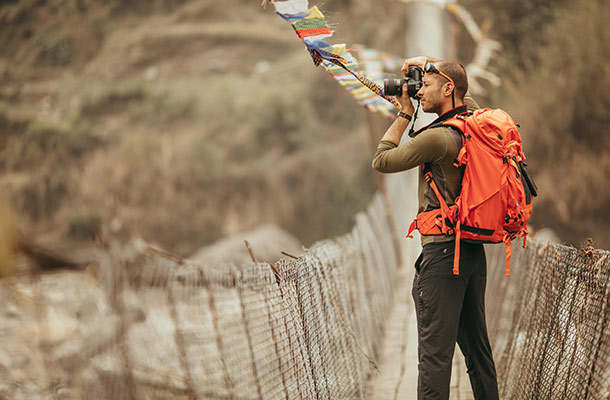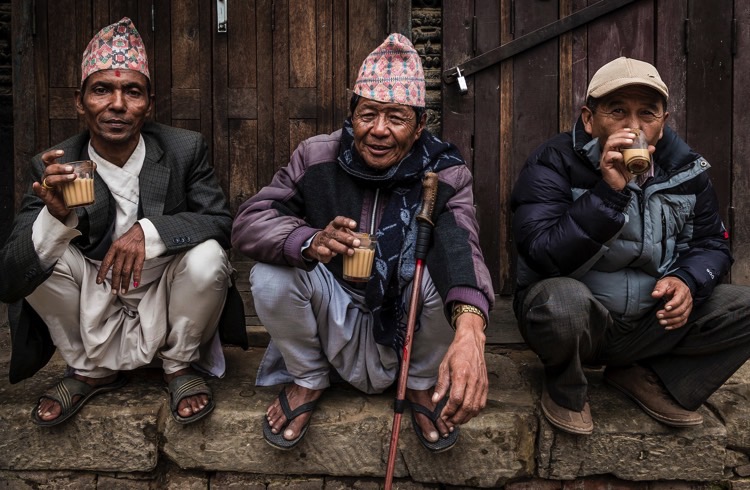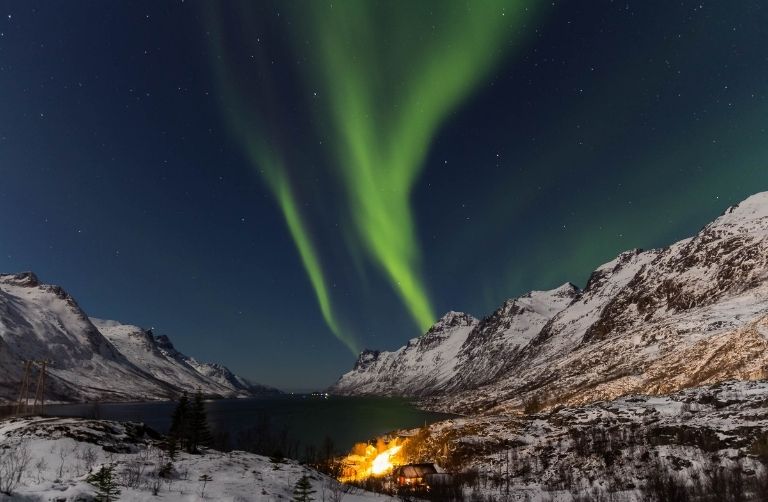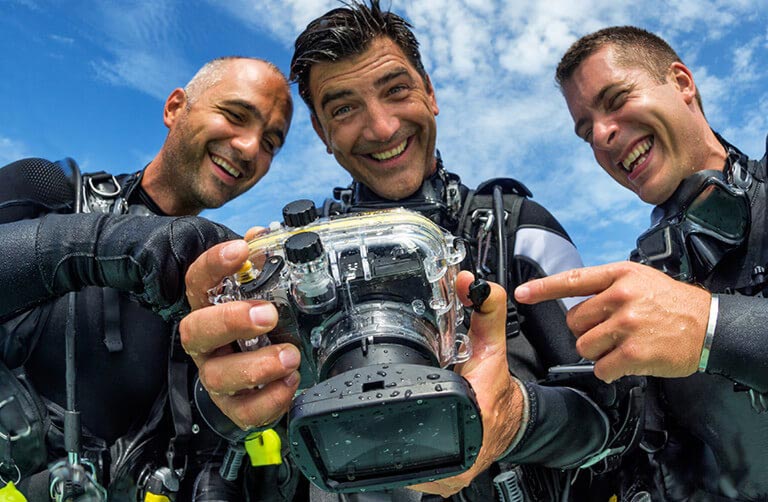Behind the Lens: Interview with Canon Master Richard I'Anson
Get to know the man behind the camera in our interview with Travel Photography Scholarship mentor Richard I'Anson.
 Photo © Richard I'Anson
Photo © Richard I'Anson
When did your passion for photography begin?
The day the 12 color prints came back from the lab from the first roll of film I shot. I was 16 and the camera was a birthday present. The pictures were taken around my sister's house. I had to wait about three days for the film to be developed and printed (we are talking about the olden days!) but I can confidently say I've been hooked ever since. Within three months I had a darkroom set up in my bedroom and I was reading every photography magazine I could get my hands on. As soon as I started developing and printing black and white film I went berserk with the camera, often shooting 60 frames a night – my sister's house, the cat, the garden – and then processing and printing till the small hours.
Did you have a mentor when you began in the industry?
No, I'm very much self-taught. However, I had a part-time job at the local camera store and the owners (John and Audrey Harvey) had been in the business for years. They started the first one-day mini-lab in Melbourne and we processed a lot of film for professional photographers. The business then became an accredited Kodak Professional Reseller. Consequently, I was involved very early with the wider photographic industry and people. Talking to photographers, customers and equipment wholesalers and developing and printing other people's photos provided a great source of information, inspiration, and lots of different perspectives on both image capture and photography as a business.
How has travel photography evolved over the years?
Ever since small, easy-to-use cameras were mass-produced, travel and photography have gone hand in hand. Some commentators thought the world had been photographed to death by the start of the 20th century! Digital photography has, of course, triggered the most recent evolution in multiple different ways, particularly in how images are captured and shared.
Once digital capture became the norm people were liberated from the inconvenience of carrying quantities of film and the cost of buying, developing and printing that film. A couple of years later sharing those pictures via the internet became easy. Camera phones have continued the evolution, as the majority of people have a phone with a camera built-in. In a way, camera phones have democratized travel photography, particularly in developing countries, where locals who couldn't afford a digital camera and the accompanying computer equipment can now join the tourists, many also shooting with camera phones, in trying to capture the moment.
This has meant that at tourist attractions and events, so many more people are intent on capturing not just one or two images but multiple images of the subject, as well as innumerable selfies. This can, and often does, change the dynamics of the experience and has certainly added another challenge for the professional photographer.
Sharing images via the internet is brilliant and for the photographer made marketing and licensing images globally so much easier. There is still a huge demand for images but because the key subject matter for the travel photographer is also the favorite subject matter for camera enthusiasts, and anyone on a holiday for that matter, there has been an explosion of travel imagery. This has had a dramatic impact on the business of travel photography.
How would you describe your style of photography?
Because I shoot so many different subjects it's difficult to define a specific style. My aim is to match the subject with the best light, and then to compose the elements to produce vibrant images that capture the reality of the moment. I aim to take strong individual images but am always conscious of how the pictures can build on each other to create a comprehensive coverage of a subject, event or destination so that viewers get a sense of what it might be like to experience it for themselves. Ideally, I'm aiming to add something new to how people perceive a place and the people who live there.
What is the best part of your job? The worst?
The best thing is the way my two passions, photography and travel, complement each other so well, allowing me to pursue both activities at the same time. I love the process of discovering and photographing new places but equally, thrive on the challenge of delving deeper and deeper into destinations and subjects that I've photographed before. Travel to me means intensive photography. It allows me to focus 100 percent on the most important part of my work, the capturing of images. All the other things that are part of making a living as a photographer are left back in the office and I can do what I do best without distraction. And it's pretty hard to beat a job where you get to see the world in its best light (quite literally most of the time).
And the worst part is the post-processing, specifically having to remove sensor dust!! Having said that I love the control post-processing gives me over the image, but the assembly line nature of having to work through thousands of images after every trip does have an element of tedium about it.
Tell us about one of your most memorable assignments
Chasing the northern lights. It is right up there with my best-ever travel and photography experiences. But that was only after it threatened to be one of the worst. I allowed four days in Tromso, Norway and pre-booked with a local company to be taken out for three nights with a spare night just in case. They pick you up at 5.30pm and you go looking, after which they drop you back 10-12 hours later. The first two nights were cloudy, cold and drizzly, we saw nothing. On the third night, things weren't looking too good either, but just as deep despair was about to set in the guides got very excited and started yelling "Aurora's here, there she is." Sure enough, a faint green glow appeared in a small break in the clouds. After two, long cold nights totaling 26 hours of nothing, it was certainly better than nothing. However, I thought the guides were just doing their best to keep me interested. But then the clouds started to clear, the sky lit up with green bands of light, a rare red corona formed overhead, multi-colored rays appeared over the mountain range, and the water turned green; it was simply breathtaking. It's hard to describe the excitement (and relief), but it truly was a hair standing up on the back of your neck; tears in the eyes moment, and minus 20 didn't feel so cold anymore.
What do you get most excited about shooting?
As a travel photographer, I photograph just about everything and I think my strength over the years is that I actually do get excited about shooting just about everything. Ultimately, though I most enjoy the transformative power of light, and I work very hard to be in the right place at the right time in order to capture my subjects in the most beautiful and dramatic light. I've come to this conclusion because no matter how magnificent the landscape or built environment if the light isn't right I tend not to shoot, preferring to return at another time.
What's your dream assignment?
I'm in a very fortunate position to decide where and what I want to photograph. I always have a list of places and subjects I want to get to next, and as I photograph one I add another to the list. I've traveled pretty extensively over a lot of years, but the list of places to go and subjects to photograph is still longer that the list of places I've already seen.
What are some of the challenges of being on an assignment overseas?
The biggest challenge is one of time, there is never enough of it and it's annoying only being able to be in one place at a time! I'm traveling with a purpose, just as anyone does on business, and I have very clear goals and high expectations of what I want to achieve. These have to be met in whatever time has been allocated, regardless of all extenuating factors such as unfavorable weather, transport issues and misleading information.
Where do you see things heading in travel photography?
It's getting harder to make a living solely from travel photography (a lot of people would say that has always been the case), particularly starting from scratch which requires building up a substantial collection at your own cost. The demand for images is as strong as ever; however, the prices being paid have plummeted due to the saturation of images and the ability of image users to source free or very, very low-priced pictures from multiple sources. For the travel photographer, this means there is a greater imperative than ever before to consistently produce great pictures of more places, subjects and events.
What tips do you have for aspiring photographers?
It's crucial to understand that traveling to take photographs is very different from taking photos while traveling. Professional travel photography is about commitment to the image. Nothing gets higher priority than being in the right place, at the right time, all of the time. You have to be prepared and able to invest time and money in travel to build a substantial collection of high-quality images to license as stock and to prove to potential clients that you can do the job. Before you hit the road thorough research and planning will go a long way to getting you to the right place at the right time more often than not. The more time you have, the more opportunities you give yourself to photograph subjects in the best light.
Related articles
Simple and flexible travel insurance
You can buy at home or while traveling, and claim online from anywhere in the world. With 150+ adventure activities covered and 24/7 emergency assistance.
Get a quote


